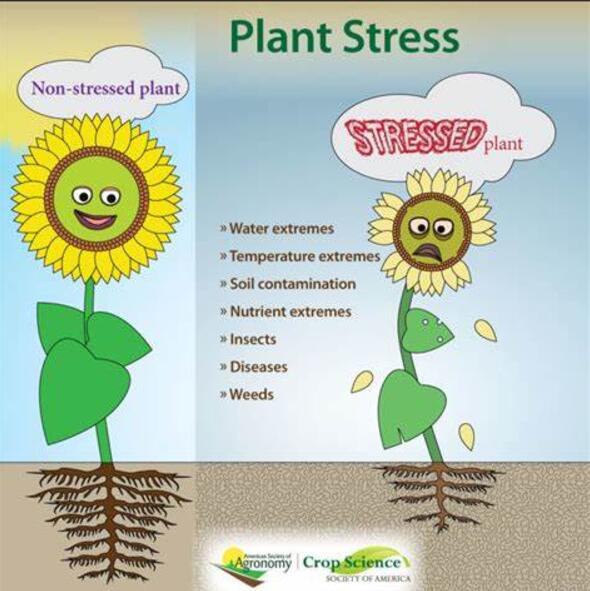Altering endogenous cytokinin content by GmCKX13 as a strategy to develop drought-tolerant plants
IF 6.8
Q1 PLANT SCIENCES
引用次数: 0
Abstract
Climate-resilient crops are essential to meet the growing food demands of an ever-increasing world population. The phytohormone cytokinins (CKs) have been well established to regulate plant adaptation to drought. Previously, we reported that GmCKX13, encoding a CK oxidase/dehydrogenase in soybean (Glycince max), was differentially expressed under drought. Here, we further characterized its in planta function to assess if GmCKX13 could be a candidate gene to develop drought-tolerant crops. Transgenic Arabidopsis 35S:GmCKX13 plants ectopically and constitutively expressing GmCKX13 using the 35S promoter had an increase in root length, while showing a reduction in shoot height and biomass. CK contents were reduced in 35S:GmCKX13 plants, coupled with the reduced expression of all AtCKX genes and increased expression of all Arabidopsis isopentenyl transferase (AtIPT) genes, except AtIPT2 and AtIPT9 that are responsible for the production of cis-zeatin-type CKs. The 35S:GmCKX13 plants showed improved tolerance to drought and more sensitivity to the treatment with exogenous abscisic acid (ABA). Under the control of the drought-responsive promoter RD29A, the transgenic RD29A:GmCKX13 Arabidopsis plants had a similar phenotype as that of the wild-type (WT) plants under normal conditions. Under dehydration, we found a significant increase in the expression of the transgene coupled with a higher leaf relative water content in RD29A:GmCKX13 plants when compared with WT plants. In consistence with this finding, the RD29A:GmCKX13 plants exhibited higher survival rates and 30 % higher seed yield than the WT plants under drought conditions. Taken together, our results demonstrated that GmCKX13 is an excellent gene for developing drought-tolerant crops by altering endogenous CK levels and ABA responsiveness when being driven by a drought-responsive promoter.
求助全文
约1分钟内获得全文
求助全文
来源期刊

Plant Stress
PLANT SCIENCES-
CiteScore
5.20
自引率
8.00%
发文量
76
审稿时长
63 days
期刊介绍:
The journal Plant Stress deals with plant (or other photoautotrophs, such as algae, cyanobacteria and lichens) responses to abiotic and biotic stress factors that can result in limited growth and productivity. Such responses can be analyzed and described at a physiological, biochemical and molecular level. Experimental approaches/technologies aiming to improve growth and productivity with a potential for downstream validation under stress conditions will also be considered. Both fundamental and applied research manuscripts are welcome, provided that clear mechanistic hypotheses are made and descriptive approaches are avoided. In addition, high-quality review articles will also be considered, provided they follow a critical approach and stimulate thought for future research avenues.
Plant Stress welcomes high-quality manuscripts related (but not limited) to interactions between plants and:
Lack of water (drought) and excess (flooding),
Salinity stress,
Elevated temperature and/or low temperature (chilling and freezing),
Hypoxia and/or anoxia,
Mineral nutrient excess and/or deficiency,
Heavy metals and/or metalloids,
Plant priming (chemical, biological, physiological, nanomaterial, biostimulant) approaches for improved stress protection,
Viral, phytoplasma, bacterial and fungal plant-pathogen interactions.
The journal welcomes basic and applied research articles, as well as review articles and short communications. All submitted manuscripts will be subject to a thorough peer-reviewing process.
 求助内容:
求助内容: 应助结果提醒方式:
应助结果提醒方式:


